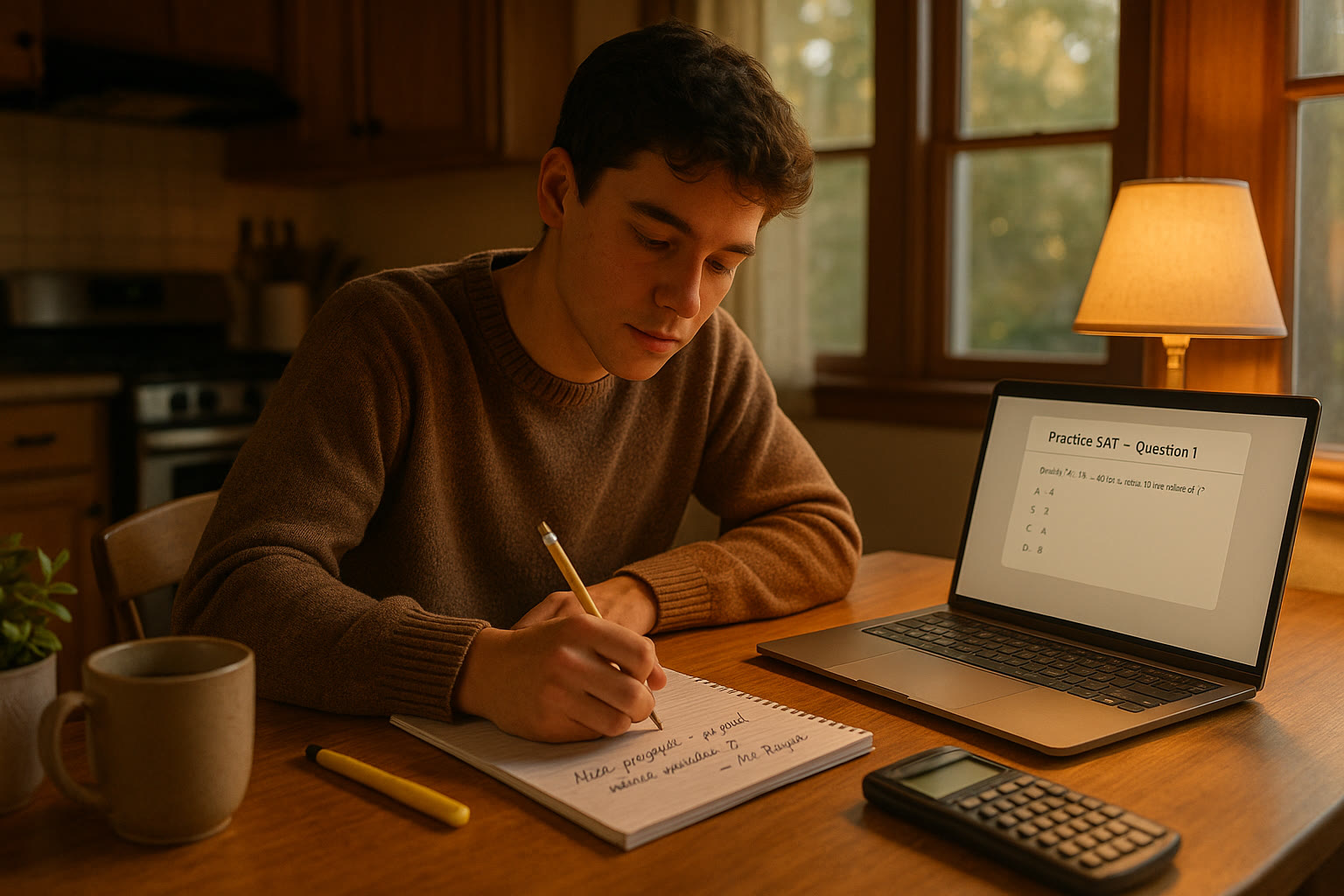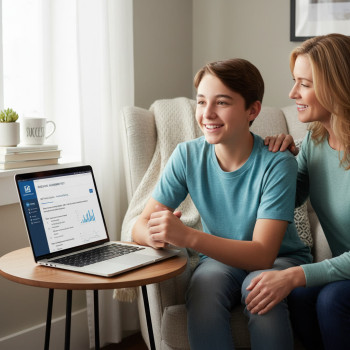Why Both Pieces Matter: A Quick, Human Take
When you open a college application, what you see is more than a checklist of grades and activities — it’s a set of signals colleges use to build a picture of you. Two of the clearest signals are your SAT score and your teacher recommendations. They’re different kinds of evidence: one is a standardized, comparable snapshot of academic skills under pressure; the other is a human, nuanced endorsement of your potential, work ethic, and classroom presence. Together, they form a richer, more credible narrative than either could alone.

Think of it as complementary evidence
Imagine you’re a detective trying to understand someone from a few clues. The SAT gives you measurable, comparable data points — what the student performed on a single day in reading, writing, and math. Teacher recommendations supply context: how the student behaved across a term, how they handled setbacks, whether they led class discussions or quietly helped classmates. Admissions officers look for both raw performance and consistent behavior. A strong SAT plus a teacher’s vivid, specific endorsement can create a compelling portrait of a student who not only tests well but also contributes to a classroom community.
The Unique Value Each Brings
What SAT scores communicate
- Standardized proficiency: SAT scores give colleges a common yardstick to compare students from different schools and backgrounds.
- Subject strengths and weaknesses: the digital SAT reports section-level results that can reveal if a student’s strengths are more verbal or quantitative.
- Scholarship and placement potential: higher scores can open doors for merit aid or placement in advanced courses once on campus.
- Resilience and growth: multiple test dates and score improvements show persistence.
What teacher recommendations communicate
- Character and classroom contributions: teachers write about curiosity, collaboration, and leadership in ways numbers cannot.
- Work habits and learning trajectory: teachers can describe how a student improved, responded to feedback, or pushed beyond the curriculum.
- Fit and intellectual promise: a teacher can signal whether a student seems prepared for the intellectual environment of a particular major or college.
- Specific anecdotes: admissions readers remember short, memorable stories — the student who stayed after class to tackle a tough problem, or the one who organized peer study sessions.
How Admissions Officers Combine These Signals
Admissions officers don’t treat SAT scores and recommendations as equals. Instead, they integrate them into a composite picture. Consider a few realistic patterns and what they might suggest:
- High SAT / Strong Recommendation: reinforces a clear message — the student performs well in testing and in sustained classroom settings; often a strong candidate for academic programs and scholarships.
- High SAT / Weak or Generic Recommendation: raises questions — does the student test well but not engage in class? Admissions readers may look more closely at extracurriculars or essays to reconcile the discrepancy.
- Average SAT / Outstanding Recommendation: suggests an under-the-radar student who might thrive in a particular environment; teacher voice can tip the balance if narrative is compelling.
- Low SAT / Strong Recommendation: signals potential that test performance didn’t capture — perhaps due to test anxiety, limited test prep resources, or uneven schooling; holistic admissions models will weigh the recommendation heavily.
Practical Steps for Students and Parents: Make the Two Work Together
Here are actionable ways to ensure SAT scores and teacher recommendations complement each other on your application.
1. Choose recommenders who know you deeply
Ask teachers who have seen you grow — ideally from junior or senior year classes that are academically relevant to your intended major. A science teacher can comment on research habits; an English teacher can speak to writing and critical thinking. The strongest recommendations come from teachers who can provide specific examples and who have observed your learning process over time.
2. Keep teachers informed about your goals
Provide teachers with a short packet: a resume of activities, a draft of your personal statement, and a note about what you hope they’ll highlight. This is not scripting their letter; it’s context. When teachers understand your goals and SAT trajectory, they can write more targeted recommendations that reinforce your application narrative.
3. Use SAT prep to align performance with promise
Strong recommendations tell a story of potential — SAT prep is how you translate that potential into measurable results. Targeted preparation can be far more effective than generic study. Whether you opt for structured courses, self-study, or personalized tutoring, focus on areas where teacher observations and SAT performance intersect: reading comprehension, evidence-based writing, and problem-solving under time pressure.

4. Show growth, not just peaks
Admissions officers value upward trajectories. A modest SAT score that rises after intentional prep, combined with a teacher’s note about newfound confidence or work habits, is often more persuasive than an early, isolated high score. Track practice-test progress and use it to demonstrate improvement in your application narrative.
5. Let teacher recommendations reinforce the specific strengths shown on the SAT
If your SAT shows particular strength in evidence-based reading, ask a teacher who saw you excel in research or essays to highlight that. The alignment underscores consistency: what you produce in class translates to how you perform on a national assessment.
Sample Timeline: How to Coordinate SAT Prep and Recommendations
Below is a simple timeline students can adapt in junior and senior years to synchronize testing and teacher outreach.
| When | Student Actions | Teacher/Recommendation Actions |
|---|---|---|
| Spring of Junior Year | Take a diagnostic SAT; begin targeted prep plan. | Continue strong classroom engagement; start building rapport with teachers. |
| Summer before Senior Year | Intensify prep (practice tests, focused review); draft resume and college list. | Provide teachers with resume and context; ask if they’re comfortable writing a recommendation. |
| Early Senior Year (Aug–Oct) | Take or retake the SAT if needed; request recommendations. | Write recommendations (teachers) and provide any follow-up examples if requested by teachers. |
| Fall Senior Year (Nov–Dec) | Finalize applications; send score reports where required. | Confirm teachers submitted letters; thank them and offer updates on outcomes. |
What Strong Recommendations Actually Sound Like
Generic praise doesn’t move admission readers. Here’s how to help teachers deliver memorable recommendations:
- Encourage anecdotes: a single, well-described incident (you resolving a lab failure, leading a debate) makes the student memorable.
- Ask for specific language about skills: critical thinking, initiative, collaboration, resilience.
- Suggest quantifiable or comparative statements: ranking you among top students they’ve taught, or commenting on measurable improvement.
Example snippet (not for teachers to copy, but to illustrate tone)
“In the spring project, Maya transformed a C-level lab approach into a publishable-quality experiment by redesigning the method, recruiting peers for data collection, and revising the write-up after two rounds of feedback. Her persistence and intellectual curiosity place her in the top 5% of students I have taught in 12 years.”
When Scores and Recommendations Don’t Match: How to Address Discrepancies
Discrepancies happen. A quiet student with exceptional recommendations but middling scores is common — as is a high scorer who appears disengaged on paper. The key is to explain and contextualize.
If scores are higher than recommendations suggest
- Use your personal statement and activities list to show engagement outside the classroom.
- Ask recommenders to highlight your intellectual curiosity beyond test-taking — projects, independent study, or class contributions they may not have fully seen.
If recommendations outshine SAT scores
- Demonstrate growth on subsequent SAT attempts or through other measurable achievements (research, competitions, AP/IB scores).
- Consider submitting additional academic evidence like graded writing samples, portfolios, or teacher-signed project summaries if the application allows.
How to Present a Unified Application Narrative
Think of the application as a short, coherent book about you. The SAT is one chapter that shows measured academic readiness; teacher recommendations are the voice that narrates the ongoing chapters. To create alignment:
- Identify two or three core themes about yourself (e.g., curiosity, leadership, resilience).
- Make sure your SAT prep, activities, essays, and recommenders each offer evidence supporting those themes.
- Use concrete examples in essays and provide teachers with context so their recommendations echo the same themes without sounding repetitive.
Practical Prep: How Sparkl’s Personalized Tutoring Fits Naturally
Personalized support can accelerate the alignment between SAT performance and classroom promise. For students who benefit from individualized guidance, Sparkl’s personalized tutoring can offer:
- 1-on-1 guidance tailored to each student’s diagnostic results, helping translate classroom strengths into higher SAT scores.
- Tailored study plans that focus on a student’s weak sections while reinforcing skills teachers have praised in the classroom.
- Expert tutors who can help develop test strategies, time management, and stress reduction techniques for test day.
- AI-driven insights that track progress and recommend targeted practice so improvement is measurable and predictable.
When recommendation letters describe, for example, a student’s growing analytical ability, a targeted tutoring program can make sure that growth shows up on the digital SAT in the form of improved section scores and a stronger, quantifiable academic profile.
Data That Helps You Decide Where to Invest Time
Not every student needs the same prep. Use these guidelines to allocate time efficiently.
| Profile | Primary Focus | Suggested Time Investment |
|---|---|---|
| High classroom engagement, average SAT | Targeted SAT strategy and timed practice | 6–10 weeks of focused prep (2–4 hours/week) |
| Strong SAT, quiet in class | Enhance extracurricular narrative and teacher rapport | Ongoing mentorship and communication with teachers (1–2 months) |
| Low SAT, exceptional teacher support | Intensive, personalized tutoring and practice tests | 10–16 weeks (4–8 hours/week) with targeted tutoring |
Real-World Examples: Short Case Studies
Case 1: Sam — The Improving Scientist
Sam’s teacher wrote about persistence after lab failures and initiative in designing a new experiment. His first SAT was middling. Sam worked with a tutor for three months focusing on reading analysis and SAT-style math. His score rose significantly, and his application tied the improved scores to the teacher’s story: methodical, persistent, and improving with instruction. The combination made him an appealing candidate for research-oriented programs.
Case 2: Aisha — The Quiet Leader
Aisha rarely spoke up in class but organized community tutoring sessions after school. Her teacher’s recommendation painted a vivid picture of leadership and empathy. Her SAT was strong but not perfect. The admissions reader, seeing strong scores and strong recommendation, interpreted Aisha as both capable and community-minded — a match for colleges valuing civic engagement.
Final Checklist: Before You Hit Submit
- Have you taken at least one full-length digital SAT practice test under timed conditions?
- Did you talk to teachers early about writing recommendations and give them materials to write from?
- Are your SAT and classroom evidence telling a consistent story about your strengths and interests?
- If you used a tutor or program, can you show measurable improvement or a plan for growth?
- Have you polished your personal statement so it echoes the themes in your recommendations and SAT performance?
Parting Thought: The Whole Story Wins
At the end of the day, colleges are looking for students who will contribute to their communities and thrive academically. SAT scores and teacher recommendations each provide a piece of proof — one quantifies, the other humanizes. When you bring them into harmony through thoughtful prep, clear communication with teachers, and an intentional application narrative, you increase your chances of being seen as more than a number. You become a whole person on paper: measurable, memorable, and ready for the next chapter.
Whether you’re a student trying to lift a section score or a parent helping your teen assemble the materials, remember that small, consistent steps add up. A few months of focused practice, a conversation with a teacher, and the right support — like Sparkl’s personalized tutoring when that fits your needs — can change how admissions officers read your application. Try to think strategically and compassionately: you’re not just chasing a score, you’re shaping a story.
Need a Next Step?
Start with a diagnostic SAT practice test and a short meeting with a teacher to discuss recommendation timing. From there, build a plan: targeted practice, intentional teacher engagement, and, if helpful, a personalized tutoring plan to accelerate results. Small, coordinated moves will make your application more coherent and compelling — and that’s the real goal.
Good luck — and remember: the best applications are those that let your strengths speak in more than one voice.
















No Comments
Leave a comment Cancel